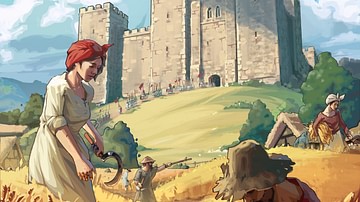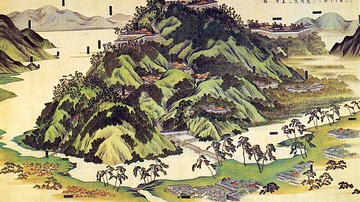The outbreak of plague in Europe between 1347-1352 – known as the Black Death – completely changed the world of medieval Europe. Severe depopulation upset the socio-economic feudal system of the time but the experience of the plague itself affected every aspect of people's lives.
Disease on an epidemic scale was simply part of life in the Middle Ages but a pandemic of the severity of the Black Death had never been experienced before and, afterwards, there was no way for the people to resume life as they had previously known it. The Black Death altered the fundamental paradigm of European life in the following areas:
- Socio-Economic
- Medical Knowledge and Practice
- Religious Belief and Practice
- Persecution and Migration
- Women's Rights
- Art & Architecture
Before the plague, the feudal system rigidly divided the population in a caste system of the king at the top, followed by nobles and wealthy merchants, with the peasants (serfs) at the bottom. Medical knowledge was received without question from doctors who relied on physicians of the past and the Catholic Church was considered an even higher authority on spiritual matters. Women were largely regarded as second-class citizens and the art and architecture of the time reflected the people's belief in a benevolent God who responded to prayer and supplication. The bacterium Yersinia pestis, carried by fleas on rodents, and the actual cause of the plague, was unknown to the people of the time and so did not factor into this world view.

Life at this time was by no means easy, or even sometimes pleasant, but people knew – or thought they knew – how the world worked and how to live in it; the plague would change all that and usher in a new understanding which found expression in movements such as the Protestant Reformation and the Renaissance.
Arrival, Spread, & Effect of the Plague
The plague came to Europe from the East, most probably via the trade routes known as the Silk Road overland, and certainly by ship oversea. The Black Death – a combination of bubonic, septicemic, and pneumonic plague (and also possibly a strain of murrain) – had been gaining momentum in the East since at least 1322 and, by c. 1343, had infected the troops of the Mongol Golden Horde under the command of the Khan Djanibek (r. 1342-1357) who was besieging the Italian-held city of Caffa (modern-day Feodosia in Crimea) on the Black Sea.
As Djanibek's troops died of the plague, he had their corpses catapulted over the city's walls, infecting the people of Caffa through their contact with the decomposing corpses. Eventually, a number of the city's inhabitants fled the city by ship, first arriving at Sicilian ports and then at Marseilles and others from whence the plague spread inland. Those infected usually died within three days of showing symptoms and the death toll rose so quickly that the people of Europe had no time to grasp what was happening, why, or what they should do about the situation. Scholar Norman F. Cantor comments:
The plague was much more severe in the cities than in the countryside, but its psychological impact penetrated all areas of society. No one – peasant or aristocrat – was safe from the disease, and once it was contracted, a horrible and painful death was almost a certainty. The dead and dying lay in the streets, abandoned by frightened friends and relatives. (Civilization, 482)
As the plague raged on, and all efforts to stop its spread or cure those infected failed, people began to lose faith in the institutions they had relied on previously while the social system of feudalism began to crumble due to the widespread death of the serfs, those who were most susceptible as their living conditions placed them in closer contact with each other on a daily basis than those of the upper classes.
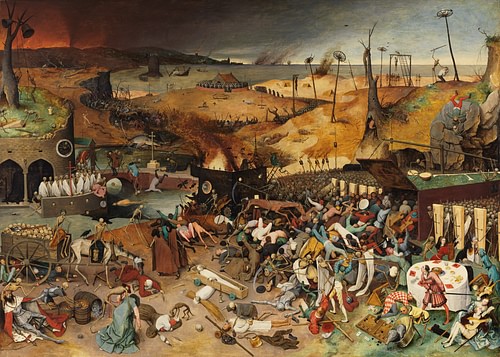
Socio-Economic Effects
Before the plague, the king was thought to own all the land which he allocated to his nobles. The nobles had serfs work the land which turned a profit for the lord who paid a percentage to the king. The serfs themselves earned nothing for their labor except lodging and food they grew themselves. Since all land was the king's, he felt free to give it as gifts to friends, relatives, and other nobility who had been of service to him and so every available piece of land by c. 1347 was being cultivated by serfs under one of these lords.
Europe was severely overpopulated at this time and so there was no shortage of serfs to work the land and these peasants had no choice but to continue this labor – which was in essence a kind of slavery – from the time they could walk until their death. There was no upward mobility in the feudal system and a serf was tied to the land he and his family worked from generation to generation.
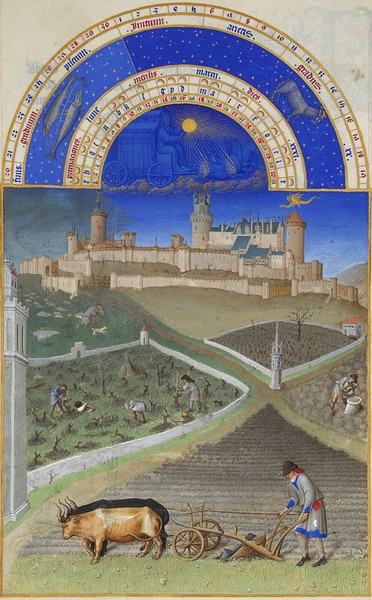
Once the plague had passed, the improved lot of the serf was challenged by the upper class who were concerned that the lower classes were forgetting their place. Fashion changed dramatically as the elite demanded more extravagant clothing and accessories to distance themselves from the poor who could now afford to dress more finely than in their previous rags and blankets. Efforts of the wealthy to return the serf to his previous condition resulted in uprisings such as the peasant revolt in France in 1358, the guild revolts of 1378, the famous Peasants' Revolt of London in 1381. There was no turning back, however, and the efforts of the elite were futile. Class struggle would continue but the authority of the feudal system was broken.
Effect on Medical Knowledge & Practice
The challenge to authority also affected received medical knowledge and practice. Doctors based their medical knowledge primarily on the work of the Roman physician Galen (l. 130-210) as well as on Hippocrates (l. c. 460 - c. 370 BCE) and Aristotle (l. 384-322 BCE), but many of these works were only available in translations from Arabic copies and, often, poor ones. Even so, the works they had were put to the best use they possibly could be. Scholar Jeffrey Singman comments:
Medieval science was far from primitive; in fact, it was a highly sophisticated system based on the accumulated writings of theorists since the first millennium BCE. The weakness of medieval science was its theoretical and bookish orientation, which emphasized the authority of accepted authors. The duty of the scholar [and doctor] was to interpret and reconcile these ancient authorities, rather than to test their theories against observed realities. (62)
Doctors and other caregivers were seen dying at an alarming rate as they tried to cure plague victims using their traditional understanding and, further, nothing they prescribed did anything for their patients. It became clear, by as early as 1349, that people recovered from the plague or died from it for seemingly no reason at all. A cure that had restored one patient to health would fail to work on the next.
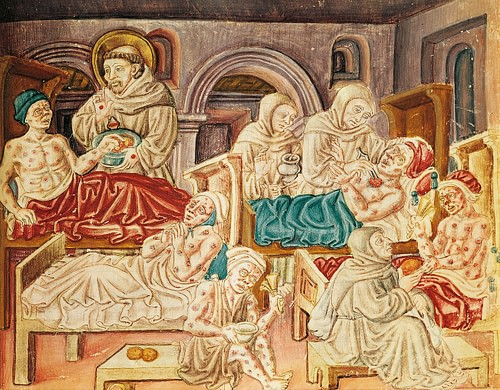
After the plague, doctors began to question their former practice of accepting the knowledge of the past without adapting it to present circumstances. Scholar Joseph A. Legan writes:
Medicine slowly began changing during the generation after the initial outbreak of Plague. Many leading medical theoreticians perished in the Plague, which opened the discipline to new ideas. A second cause for change was while university-based medicine failed, people began turning to the more practical surgeons…With the rise of surgery, more attention was given to the direct study of the human body, both in sickness and in health. Anatomical investigations and dissections, seldom performed in pre-plague Europe, were pursued more urgently with more support from public authorities. (53)
The death of so many scribes and theoreticians, who formerly wrote or translated medical treatises in Latin, resulted in new works being written in the vernacular languages. This allowed common people to read medical texts which broadened the base of medical knowledge. Further, hospitals developed into institutions more closely resembling those in the modern-day. Previously, hospitals were used only to isolate sick people; after the plague, they became centers for treatment with a much higher degree of cleanliness and attention to patient care.
Change in Religious Attitude
Doctors and theoreticians were not the only ones whose authority was challenged by the plague, however, as the clergy came under the same kind of scrutiny and inspired the same – or far greater – doubt in their abilities to perform the services they claimed to be able to. Friars, monks, priests, and nuns died just as easily as anyone else – in some towns, religious services simply stopped because there were no authorities to lead them - and, further, the charms and amulets people purchased for protection, the services they did attend, the processions they took part in, the prayer and the fasting, all did nothing to stop the spread of the plague and, in some instances, encouraged it.
The Flagellant Movement, in which groups of penitents would travel town to town whipping themselves to atone for their sins, began in Austria and gained momentum in Germany and France. These groups, led by a self-proclaimed Master with little or no religious training, not only helped spread the plague but also disrupted communities by their insistence on attacking marginalized groups such as the Jews.
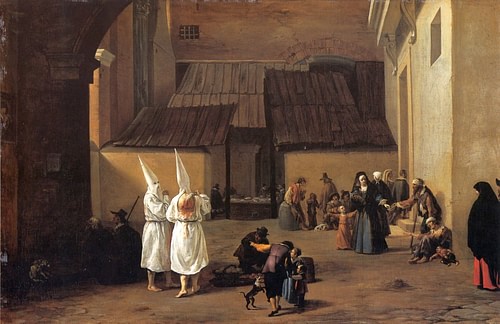
Increased Persecution & Migration
The frustration people felt at their helplessness in the face of the plague gave rise to violent outbursts of persecution across Europe. The Flagellant Movement was not the only source of persecution; otherwise peaceful citizens could be whipped into a frenzy to attack communities of Jews, Romani (gypsies), lepers, or others. Women were also abused in the belief that they encouraged sin because of their association with the biblical Eve and the fall of man.
The most common targets, however, were the Jews who had long been singled out for Christian hostility. The Christian concept of the Jew as “Christ Killer” encouraged a large body of superstition which included the claim that Jews killed Christian children and used their blood in unholy rituals, that this blood was often spread by Jews on the fields around a town to cause plague, and that the Jews regularly poisoned wells in the hopes of killing as many Christians as possible.
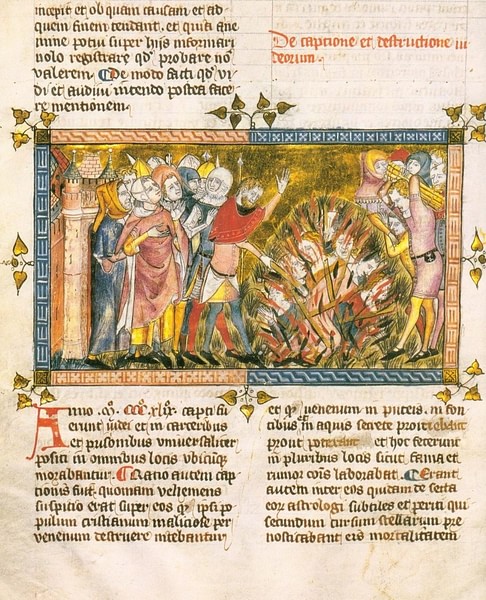
Jewish communities were completely destroyed in Germany, Austria, and France – in spite of a bull issued by Pope Clement VI (l. 1291-1352) exonerating the Jews and condemning Christian attacks on them. Large migrations of Jewish communities fled the scenes of these massacres, many of them finally settling in Poland and Eastern Europe.
Women's Rights
Women, on the other hand, gained higher status following the plague. Prior to the outbreak, women had few rights. Scholar Eileen Power writes:
In considering the characteristic medieval ideas about women, it is important to know not only what the ideas themselves were but also what were the sources from which they spring…In the early Middle Ages, what passed for contemporary opinion [on women] came from two sources – the Church and the aristocracy. (9)
Neither the medieval Church nor the aristocracy held women in very high regard. Women of the lower classes could work as bakers, milkmaids, barmaids, weavers, and, of course, as laborers with their family on the estate of the lord but had no say in directing their own fate. The lord would decide who a girl would marry, not her father, and a woman would go from being under the direct control of her father, who was subject to the lord, to the control of her husband who was equally subordinate.
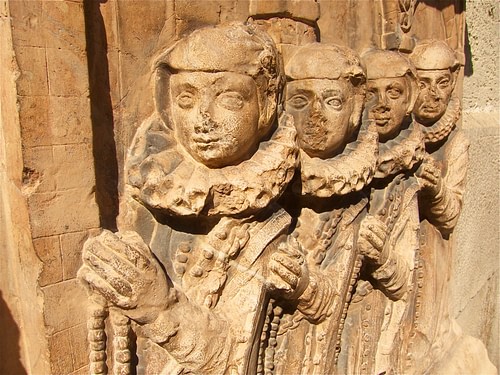
After the plague, with so many men dead, women were allowed to own their own land, cultivate the businesses formerly run by their husband or son, and had greater liberty in choosing a mate. Women joined guilds, ran shipping and textile businesses, and could own taverns and farmlands. Although many of these rights would be diminished later as the aristocracy and the Church tried to assert its former control, women would still be better off after the plague than they were beforehand.
Art & Architecture
The plague also dramatically affected medieval art and architecture. Artistic pieces (paintings, wood-block prints, sculptures, and others) tended to be more realistic than before and, almost uniformly, focused on death. Scholar Anna Louise DesOrmeaux comments:
Some plague art contains gruesome imagery that was directly influenced by the mortality of the plague or by the medieval fascination with the macabre and awareness of death that were augmented by the plague. Some plague art documents psychosocial responses to the fear that plague aroused in its victims. Other plague art is of a subject that directly responds to people's reliance on religion to give them hope. (29)
The most famous motif was the Dance of Death (also known as Danse Macabre) an allegorical representation of death claiming people from all walks of life to come with him. As DesOrmeaux notes, post-plague art did not reference the plague directly but anyone viewing a piece would understand the symbolism. This is not to say there were no allusions to death before the plague, only that such became far more pronounced afterwards.
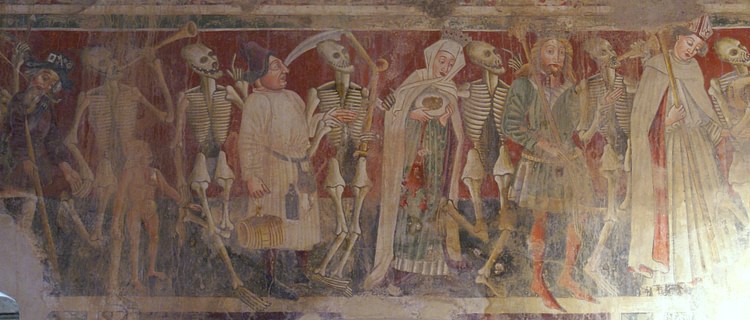
Architecture was similarly influenced, as noted by Cantor:
In England, there was a parallel increased austerity in architectural style which can be attributed to the Black Death – a shift from the Decorated version of French Gothic, which featured elaborate sculptures and glass, to a more spare style called Perpendicular, with sharper profiles of buildings and corners, less opulent, rounded, and effete than Decorated…The cause may have been economic – less capital to spend on decoration because of heavy war taxation and reduction of estate incomes because of labor shortage and higher peasants' wages. (Wake, 209)
Since peasants could now demand a higher wage, the kinds of elaborate building projects which were commissioned before the plague were no longer as easily affordable, resulting in more austere and cost-effective structures. Scholars have noted, however, that post-plague architecture also clearly resonated with the pervasive pessimism of the time and a preoccupation with sin and death.
Conclusion
It was not only the higher wages demanded by the peasant class, nor a preoccupation with death that affected post-plague architecture, however, but the vast reduction in agricultural production and demand due to depopulation which led to an economic recession. Fields were left uncultivated and crops were allowed to rot while, at the same time, nations severely limited imports in an effort to control the spread of the plague which only worsened their economies as well as those of their former trading partners.
The widespread fear of a death one had not earned, could not see coming, and could not escape, stunned the population of Europe at the time and, once they had somewhat recovered, inspired them to rethink the way they were living previously and the kinds of values they had held. Although little changed initially, by the middle of the 15th century radical changes – unimaginable only one hundred years before – were taking place throughout Europe, notably the Protestant Reformation, the agricultural shift from large-scale grain-farming to animal husbandry, the wage increase for urban and rural laborers, and the many other advances associated with the Renaissance.
Plague outbreaks would continue long after the Black Death pandemic of the 14th century but none would have the same psychological impact resulting in a complete reevaluation of the existing paradigm of received knowledge. Europe – as well as other regions – based its reactions to the Black Death on traditional conventions – whether religious or secular – and, when these failed, new models for understanding the world had to be created.

